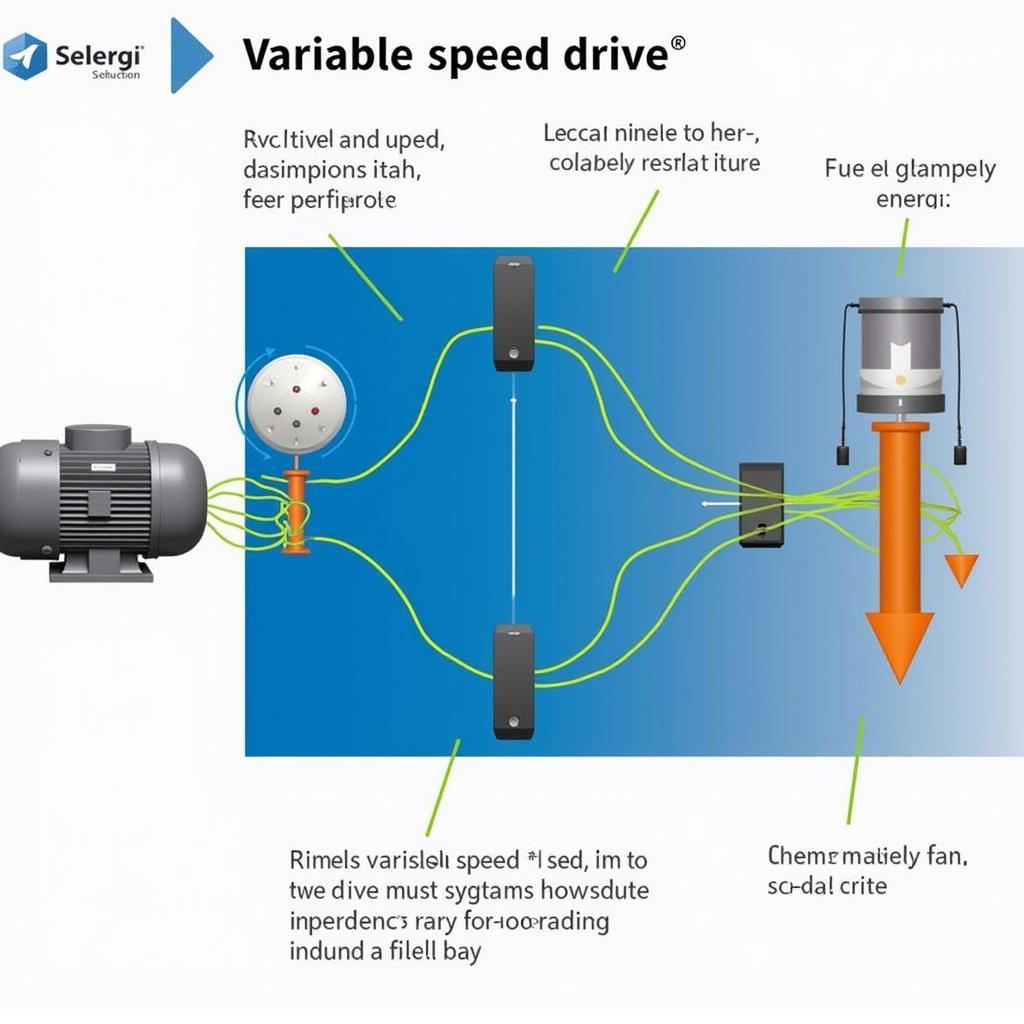Fan Laws Rpm, often overlooked yet crucial, dictate the performance and efficiency of fans in various applications. Understanding this intricate relationship between fan speed, airflow, pressure, and power consumption is essential for anyone working with ventilation systems, electronics cooling, or any system relying on fan operation. This guide delves into the core principles of fan laws RPM, providing practical insights and applications.
Deciphering the Fundamentals of Fan Laws
Fan laws are a set of principles describing the relationship between various fan performance parameters. These laws are derived from fundamental fluid dynamics and are generally applicable to centrifugal and axial fans operating within a specific range of conditions.
Key Parameters and their Interplay
- RPM (Revolutions Per Minute): This represents the rotational speed of the fan, directly influencing the amount of air moved.
- Airflow (CFM or m3/h): This is the volume of air moved by the fan per unit of time.
- Pressure (inches of water or Pascals): This signifies the force exerted by the fan to overcome resistance in the system.
- Power Consumption (Watts): This measures the electrical power required to operate the fan.
The Three Primary Fan Laws
1. Fan Law for Airflow and Speed
This law states that airflow is directly proportional to fan speed. Doubling the RPM doubles the airflow, assuming other factors remain constant.
Formula: Airflow 1 / Airflow 2 = RPM 1 / RPM 2
2. Fan Law for Pressure and Speed
This law dictates that pressure varies with the square of the fan speed. Doubling the RPM increases the pressure by a factor of four.
Formula: Pressure 1 / Pressure 2 = (RPM 1 / RPM 2)²
3. Fan Law for Power and Speed
This law establishes that power consumption varies with the cube of the fan speed. Doubling the RPM increases the power consumption by a factor of eight.
Formula: Power 1 / Power 2 = (RPM 1 / RPM 2)³
Practical Implications of Fan Laws RPM
Understanding fan laws RPM is not just theoretical; it has significant real-world applications:
- System Design: Engineers use fan laws to select fans with appropriate RPM ranges to achieve desired airflow and pressure requirements while optimizing energy efficiency.
- Troubleshooting: By analyzing fan performance metrics, technicians can identify potential issues. For instance, a drop in airflow despite normal RPM could indicate a blockage in the system.
- Fan Control: Variable speed drives can adjust fan speeds based on demand, ensuring optimal performance and energy savings. Fan laws are crucial for calculating the impact of speed adjustments on other parameters.
Applying Fan Laws: A Practical Scenario
Let’s consider a scenario where a fan is operating at 1000 RPM, delivering 1000 CFM of airflow. If we increase the fan speed to 1500 RPM, we can use fan laws to predict the impact:
- New Airflow: Applying the first fan law, the new airflow would be 1500 CFM (1000 CFM x (1500 RPM / 1000 RPM)).
- New Pressure: Using the second fan law, the new pressure would increase by a factor of 2.25 ((1500 RPM / 1000 RPM)²), resulting in a significant pressure rise.
- New Power Consumption: Utilizing the third fan law, the new power consumption would increase by a factor of 3.375 ((1500 RPM / 1000 RPM)³), highlighting the substantial impact on energy usage.
 Fan Speed Control
Fan Speed Control
Limitations and Considerations
While fan laws provide a valuable framework, it’s essential to recognize their limitations:
- Idealized Conditions: Fan laws assume ideal conditions and may not hold true in real-world scenarios with variations in air density, temperature, and system complexities.
- Operating Range: Fans have specific operating ranges, and exceeding these ranges can lead to reduced efficiency, increased noise, and potential damage.
Conclusion
Mastering the principles of fan laws RPM is paramount for anyone involved in designing, operating, or maintaining systems relying on fan performance. By understanding the interplay between speed, airflow, pressure, and power, you can optimize system efficiency, troubleshoot issues effectively, and make informed decisions about fan selection and control.
For a deeper dive into practical tools and resources, explore our guides on how to calculate fan speed and utilize our comprehensive fan law calculator excel for precise calculations.
Frequently Asked Questions (FAQs)
1. What are the units commonly used for fan laws calculations?
While various units can be used, ensuring consistency is key. Common units include:
- RPM: Revolutions per minute
- Airflow: Cubic feet per minute (CFM) or cubic meters per hour (m3/h)
- Pressure: Inches of water (in. wg) or Pascals (Pa)
- Power: Watts (W)
2. How do changes in air density affect fan laws?
Air density impacts fan performance. Higher altitudes, for example, have lower air density, reducing fan efficiency. Adjustments might be needed for accurate calculations.
3. What are the practical applications of fan laws in electronics cooling?
Fan laws are crucial for designing effective cooling systems for electronics. By understanding the relationship between fan speed and airflow, engineers can select fans that provide sufficient cooling to prevent overheating.
4. How can I determine the most efficient fan speed for my application?
The most efficient fan speed depends on specific requirements. Balancing airflow, pressure, and power consumption is key. Variable speed drives offer flexibility and optimization based on demand.
5. Are there any online tools or calculators available for applying fan laws?
Yes, resources like our fan law calculator excel provide convenient ways to input parameters and obtain accurate calculations, simplifying the application of fan laws.
Need further assistance? Contact us at 0903426737, email fansbongda@gmail.com, or visit our office located at Tổ 9, Khu 6, Phường Giếng Đáy, Thành Phố Hạ Long, Giếng Đáy, Hạ Long, Quảng Ninh, Việt Nam. Our dedicated customer support team is available 24/7 to address your inquiries.


